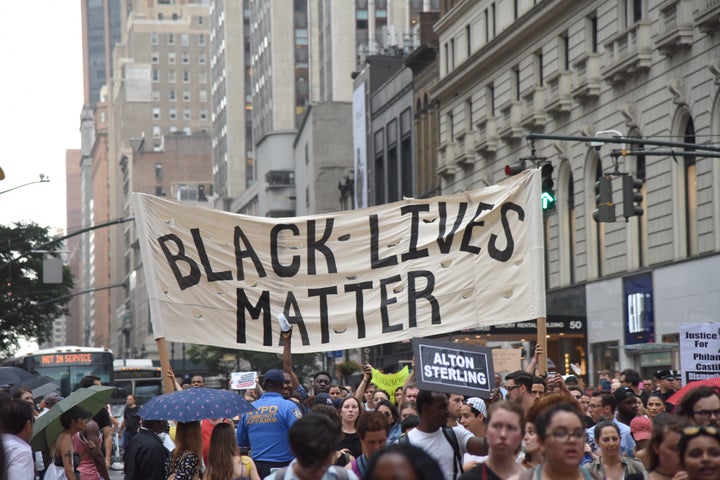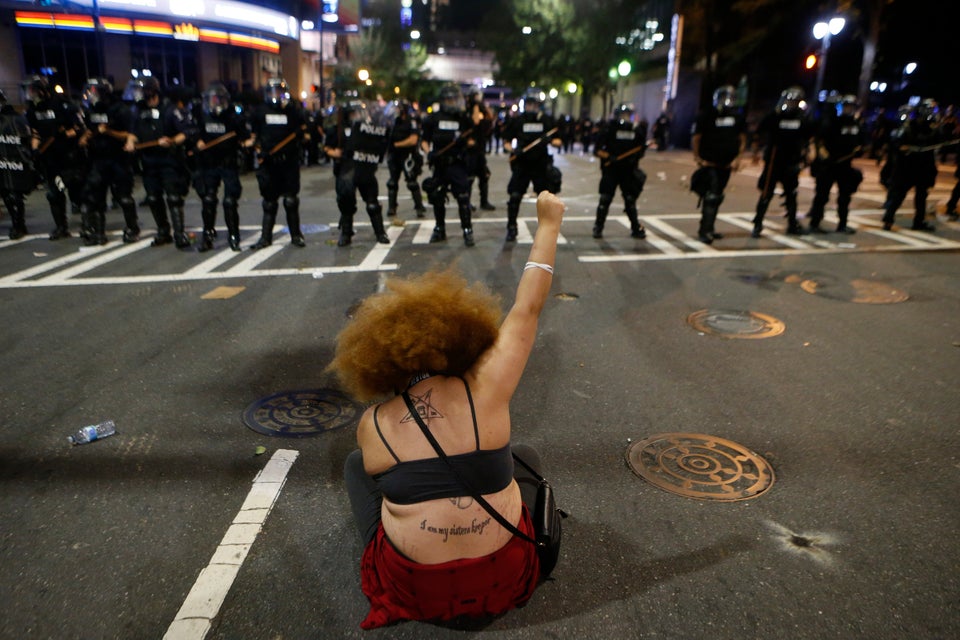
A few days ago, for the third time in as many months, I made sure the kids were both sound asleep, then crawled into bed and watched a video of a black man who was killed by police. Every time these videos surface I go through the same cycle of emotions – anger, grief, frustration, fear.
Their names become hashtags on my Facebook feed and their faces adorn protest banners - and after some time, the trauma and the fury settles and life goes on. Because it has to.
The rhythm and frequency of these shootings is not unlike that other recurring tragedy that we’ve simply learned to live with. Tragedies like the Pulse night club and Sandy Hook Elementary and Emanuel Church in Charleston and the Century 16 movie theater in Aurora. The headlines erupt and then disappear just like the names of police victims, Eric Garner, Freddie Gray, Philando Castile, Terence Crutcher.
It’s as if two of our most intractable social issues, gun violence and racism, have intersected in the most brutal fashion – leading to an uninterrupted string of deadly confrontations between police and communities of color.
I have no doubt that many of these killings are driven by misguided fear ― based on stereotypes of poor black men, or violent black men. Police officers live in the same world as the rest of us. They see the same images of dangerous black men in movies and in the news, and react based on faulty instincts that tell them their lives are in danger.
I don’t say this to dismiss the idea that some police officers are overtly hostile to the black people they serve based on a perverted sense of superiority. But I want to make it clear that even well-intentioned officers may be socially programmed towards a certain level of distrust of black men. That distrust might mean being turned down for a job or having a hard time catching a cab in more innocuous settings – but during a police encounter it’s a matter of life and death.
Yet underlying this subtext of both overt and latent is racism is America’s complicated relationship with firearms. A 2015 study by Columbia University reported that 1 in 3 Americans own a firearm. This means that anytime a police officer approaches a stalled vehicle or a crime suspect, he or she faces the very real possibility that the person they’re approaching is legally armed and potentially hostile. When your citizens are armed to the teeth, a police officer’s job becomes that much more dangerous. Officers are more likely to know someone who’s been killed in the line of duty. More likely to have seen and participated in life-threatening encounters. More likely to panic.
But despite this general tension between police forces and legitimately armed citizens, communities of color are hurting and distrustful because officers’ panicked responses seem to overwhelmingly occur when a person of color is involved. It may just be that the pervasive presence of guns in this country has combined with our implicit bias against brown skin – leading not only to the militarization of police forces, but the tragically recurring shootings of innocent people.
The brewing tensions over police violence, race relations, and access to firearms all came to a head in Dallas this past July, when a lone gunman killed 5 police officers at the close of a Black Lives Matter protest. Ten days later, 3 more officers were killed in Baton Rouge. In those chilling days we witnessed how an unaddressed social malady, combined with ubiquitous access to firearms, morphed into a threat that the police couldn’t handle with conventional tactics. We saw the conflict escalate from a firefight to the first use of explosives against the American public. We saw how fear can drive lethal decisions on both sides.
The argument for an individualized right to bear arms has always centered on the need for protection from the government. Should we, as citizens, ever find ourselves being abused by a tyrannical government we must have the means to defend ourselves, overthrow the abusive government, and restore a proper democracy of our choosing. Whether you believe that any such injustice exists against black communities or not, this was precisely the intent of the Dallas and Baton Rouge shooters.
Before Dallas and Baton Rouge we could always label the perpetrator of a mass shooting a madman and decry the state of mental illness and isolation in this country. This shooting was different – because the perpetrators were not madmen in the same sense. They weren’t misguided teenagers or wild-eyed adults with haunting, delusional manifestos. These were men seeking revenge, plain and simple. The shots that were fired were potentially the first shots of a literal race war between armed citizens and the police force that is sworn to protect them. Those horrifying days mark the moment when two angry individuals from a marginalized group gave up on peaceful demonstrations. Their trust had eroded to the point that they believed their only avenue for justice and security was violence. They’d been disregarded to the point that they had nothing to gain from cooperating with the power structure and nothing more to lose. They’d finally decided to take up arms against their oppressors. In short, the moment white people have feared since slavery.
I always believed that the conversation over gun access might change if some high-profile celebrity was injured or killed in a mass shooting. But perhaps it needed to be something far more primal: basic fear. Those of us from communities of color and those of us who prefer to walk about our communities unarmed lost our sense of security long ago. Those who chose to carry didn’t feel that same sense of apprehension until after Dallas and Baton Rouge.
I’m still hopeful that some of this might shock us out of our complacency over gun violence. Because the dead kindergarteners at Sandy Hook weren’t enough. And because we’ve already seen enough shootings in churches and malls and health clubs and movie theaters and just about every other place you can think of. But if Gabby Giffords or the 50+ people shot at a night club in Orlando weren’t enough to change the conversation, it’s hard to imagine that the deaths of a handful of black men and women will.
If one thing is clear, it’s that this combination of lingering racism and gun ownership is tearing through our communities at an alarming rate. It’s not enough to tackle one or the other. We have to address both for our streets to be safe again.

